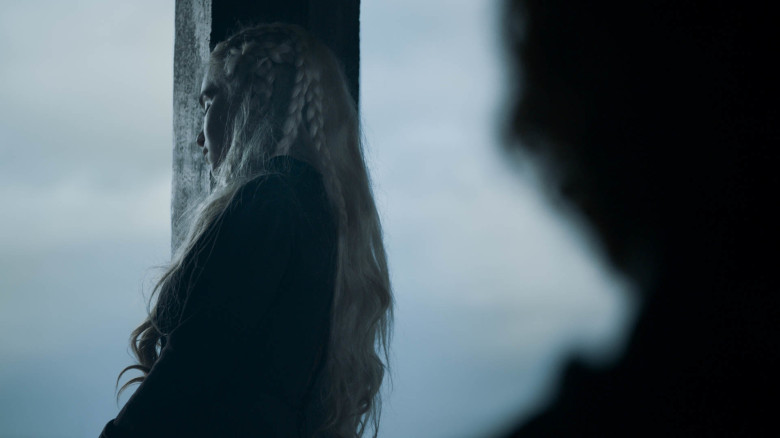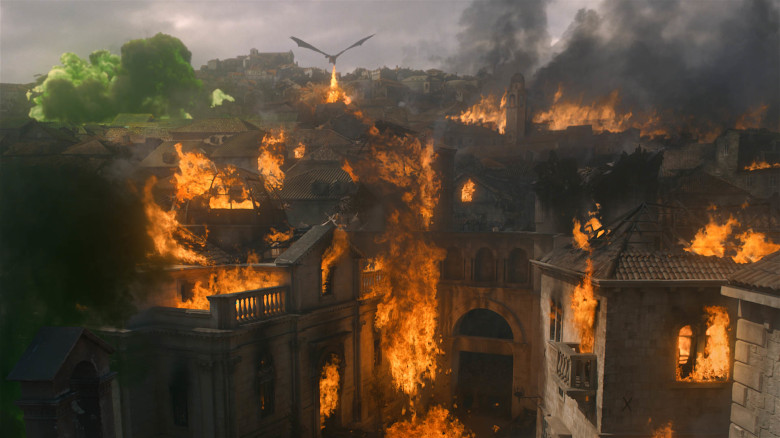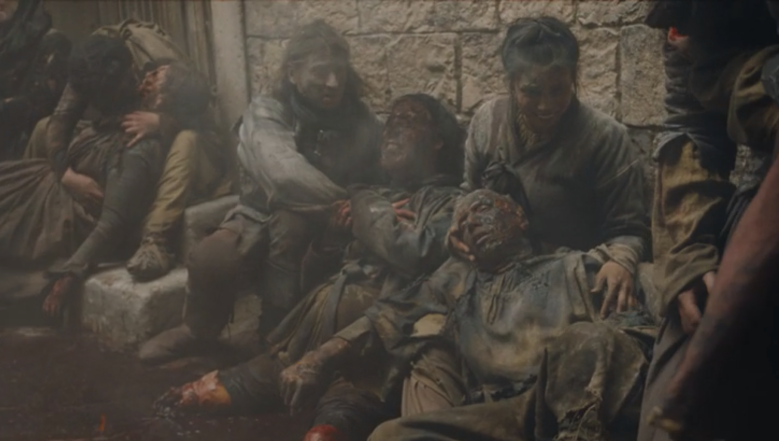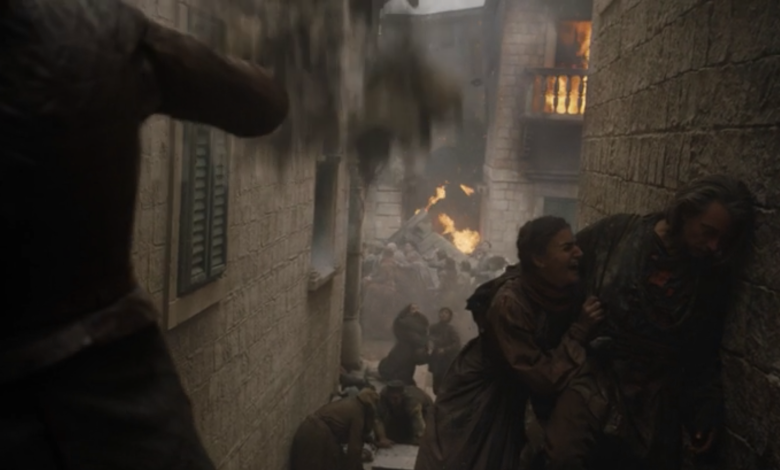“Thrones” master of battles breaks down his introspective approach to directing the destruction of King’s Landing in “The Bells.”
When executive producer Miguel Sapochnik started to work on Season 8 of “Game of Thrones”, he initially envisioned directing episodes three through five. Due to production logistics, that became an impossibility. David Nutter would direct episode 4, but Sapochnik always held onto the strong image of how the end of that episode would dictate the opening of the penultimate episode, “The Bells.”
In Sapochnik’s mind, we would never cut to Daenerys after Cersei decided to kill her friend Missandei. Her reaction to the death would be in the opening images of “The Bells,” with Daenerys – no makeup and her hair ruffled – in her chambers. “We said, ‘You’ve never been like this,” said Sapochnik. “It was this idea of us trying to piece her back together, but something’s broken.”
In the years Sapochnik had worked on the show, he often had conversations with the principal cast about their characters’ arcs to figure out how best to play a particular moment. This moment Daenerys reached in “The Bells,” although not knowing the exact ending until earlier that year, was one he had been anticipating for years.

Daenerys at the opening of “The Bells”
HBO
“The way she has treated humans, and the conviction she has, means that conviction is eventually going to fall afoul,” said Sapochnik. The key in Sapochnik’s mind was the conviction with which the character came to her fateful and destructive decisions at the end of the series, and that it needed to be just as strong as those she had in early seasons. In directing the opening scene, he played of the juxtaposition with Tyrion, who had made a number of mistakes and was questioning everything.
“She’s not questioning herself anymore, which is the difference between somebody who, I think, has kind of lost their mind,” said Sapochnik. “That’s part of what makes us human, is we question whether we’ve made the right decisions or not.”
In directing the opening 25 minutes, Sapochnik knew he needed to bring the audience firmly into the character’s final decision to destroy King’s Landing. “At that point, you don’t need to see her,” said Sapochnik, describing the scenes of fiery destruction. “We decided not to cut back to her. When she makes that decision, she and the dragon become one.”

“The Bells”
HBO
Despite some criticism after the show aired, the decision to keep Daenerys and her dragon in the backdrop while the duo laid siege to the city was important for the director, who wanted his camera and the audience on the ground with people during the destruction of King’s Landing.
“The destruction of King’s Landing, for me, has always been an audience participation event. You wanted this, you wanted this, you wanted this. Here. Is that really what you wanted?” asked Sapochnik. “I felt like there was this thing of this bloodthirstiness that exists in the fans, for revenge, for this payback that is personified by Dany. I just wanted to get to the core of what that actually means. Because even though the characters that don’t exist in the end, what you’re looking for, as an audience member, is death and destruction. I wanted people to know how bad death and destruction can be in the safe environment they’re living in.”
An important ingredient for Sapochnik in directing some of “Game of Thrones” biggest battles, has been to find the story he could grab hold of as filmmaker. For each, he would reduce the clashes’ story to a short mantra which he’d use a benchmark of what was most important in the thousands of creative decisions he’d face. For “The Bells” that spine was “What have we become?” It’s a question Sapochnik wasn’t only asking of the characters and of the show, but also of himself.
“I think that I am complicit, and part of, a society that embraces violence as entertainment, and it’s messed up,” said Sapochnik. “Here I am doing the fifth – I don’t even know how many – but there are a lot of battles. At some point, you’re like, ‘Why am I being participatory in this? Why am I creating this for people to see? Isn’t there enough bloodshed and horrible stuff going on in the world?’”

“The Bells”
screenshot
Sapochnik fully embraced what he believed creator D.B. Weiss and David Benioff’s overarching and “meaningful” message was about war in “Game of Thrones,” specifically that “there are no winners, only survivors.” And while he looks at the challenge of visually translating the show’s most complicated battle scenes as some of the most rewarding work he had ever done as a director, he admits there have been times the staging of such violence has taken a toll on him.
“If you spend 45 days violently enacting, recreating murders of the most brutal kind, it does have an impact on you,” said Sapochnik. “Then you sit in your own home, and you suddenly feel … it’s really weird. It’s really uncanny, and it makes you suddenly just get a glimpse of an idea of how destructive war is, after the fact.”
To prepare for “The Bells” Sapochnik watched a number of videos that captured destruction, both fictional films like “San Andreas” and clips of real life explosions and horrific accidents. A master of layered, complicated compositions, the director studied to see where his eye was drawn in frame. In previous battles Sapochnik went for an experiential approach to directing, to create a controlled chaos of battle in front of camera, but that would not work for a story of mass destruction.
“I’d try and figure out where my eye was going. What’s pulling me in? What’s making this feel real?” asked Sapochnik. “You and I can’t even understand that, because we’ve never been in that situation, right? I try to find the story in that. Because destruction is not something that there is much of a story to. It’s like something’s there and then you blow it up, or something’s there and then it collapses. Then it’s all about gravity, and mass moving, and stuff like that. It’s more mathematics.”

“The Bells”
screenshot
“The Bells” director prep of studying destruction led to an even more important discovery and obsession – how the these horrific images become normalized. “How can I re-sensitize both myself, and the people about watching this?” asked Sapochnik. “This idea that every single person that dies in this story, every single person that is buried by rubble, every kid, that little girl, they are people, and they have mothers, and fathers, and lives, like us. They had aspirations and dreams, and they got cut short by this event. That feels like what we were trying to do there.”
For Sapochnik this meant a change of approach to how he had directed battles. In trying to grasp the story of each epic clash he would tell the story through a specific character’s point-of-view and emotional story. In “The Bells,” he would create compositions that drew you toward the ordinary people who populated the frame.
“I’m meant to direct you towards caring for a character you know well,” said Sapochnik. “What I wanted to get to in King’s Landing was the idea that every single fucking one of these characters matters. Not just the characters, but the extras, and the people you don’t know, and all the people you’ll never see, and never know about. They all matter. That’s maybe me, or maybe that’s Dan and David [Weiss and Benioff], I don’t know. But it was something that evolved out of the need, or my desire, to not just add to the equation of violence in television, but rather to at least propose, ‘Think about it.’”
Sign Up: Stay on top of the latest breaking film and TV news! Sign up for our Email Newsletters here.




















![[Book Review] The Blade Itself (The First Law Trilogy) by Joe Abercrombie](https://bendthekneegot.com/wp-content/uploads/2018/01/1516047103_maxresdefault-218x150.jpg)


















